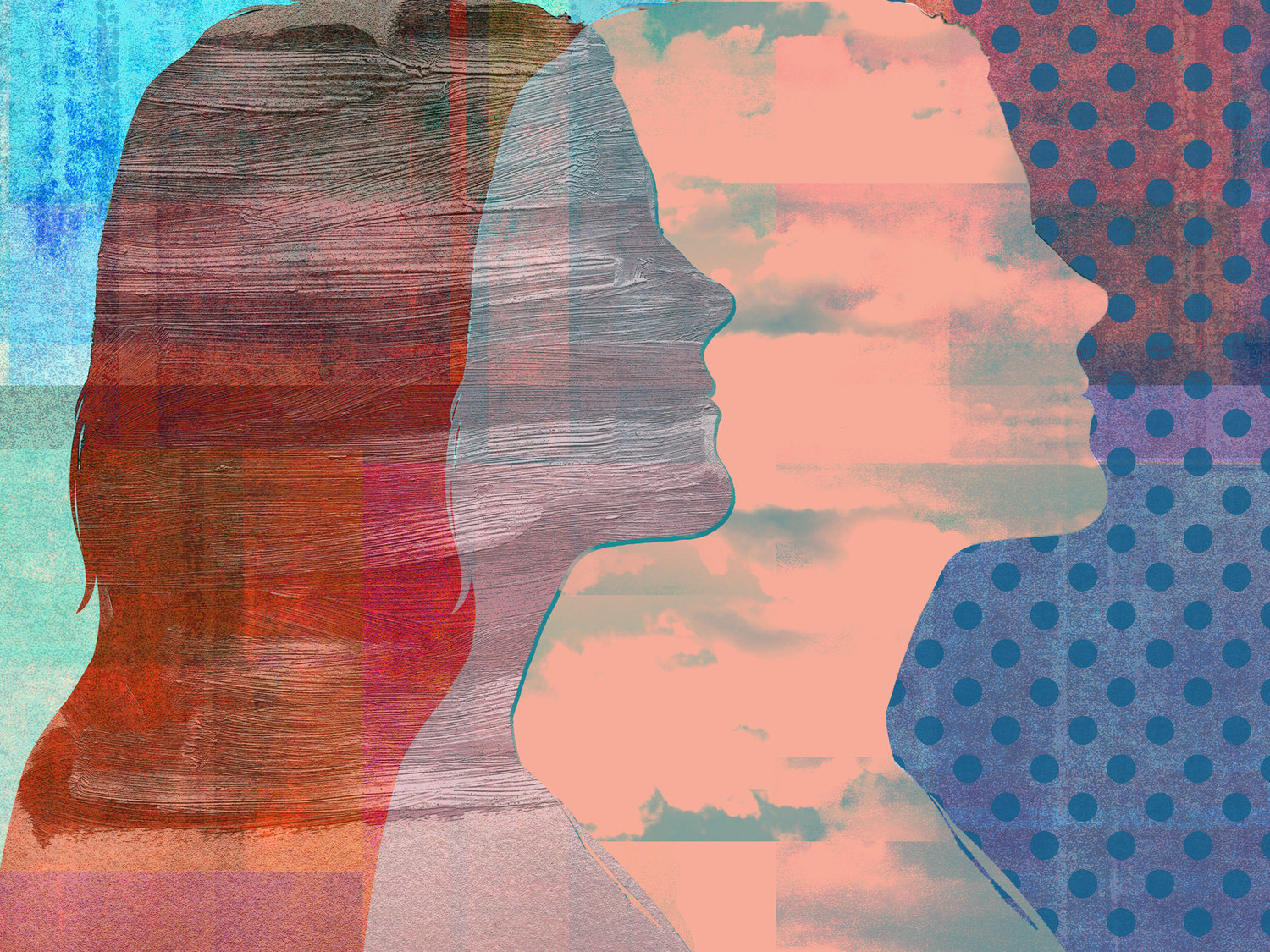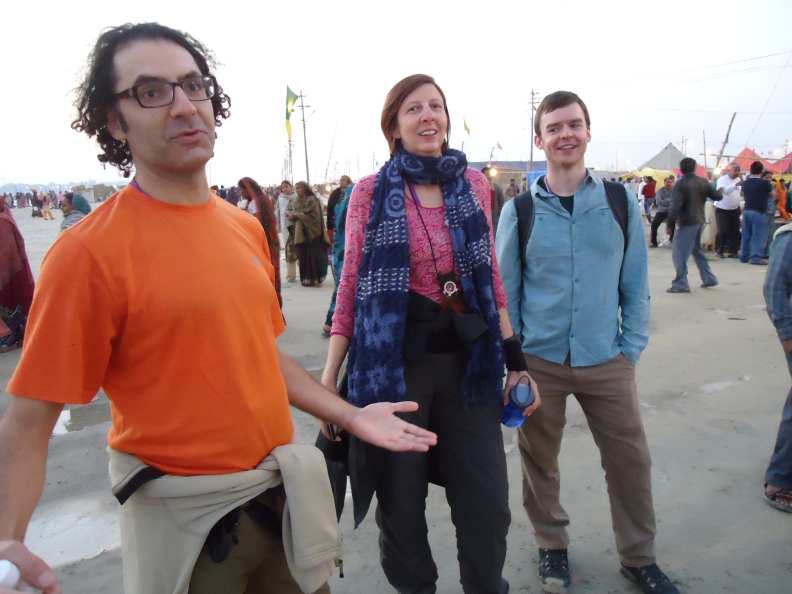Image by Roy Scott/Getty Images/Ikon Images
Is Mental Illness Having A #MeToo Moment?
Fifteen years ago, I broke up with my very nice boyfriend and plunged headlong into a dark depression. I loved Marc but had known from the beginning that he wasn't the man for me.
I still believe that breaking up was the right move, but I chose a bad time to do it. I was between jobs and felt adrift. I was applying for a more permanent immigration visa (I'm from Canada – and, yes, Canadians need visas too) and it was a stressful and expensive process that made me question my legitimacy. I was on shaky ground emotionally and financially. Marc tried to persuade me to get married to stabilize my citizenship, but I didn't want to. That's how clear I was that the relationship needed to end.
I just didn't realize that by breaking up with him at this unsure moment in my life I was essentially cutting the guy wires of my mental health.
It was a terrifying time, and even today I'm very glad that I came through it alive. I'm often amazed that I feel a basic sense of contentment about my life now. It could easily have been otherwise.
All of this came rushing back to me last Saturday. In the wake of Anthony Bourdain's death the day before, my Facebook feed was flooded with stories from friends and acquaintances expressing their struggles with depression and very close calls with suicide. I had no idea there were so many people like me all around. It felt like the beginnings of a #metoo moment for those of us who have spent time in this frightening landscape. After reading so many stories of people struggling to feel acceptable and worthy, what had seemed like an outlier experience started to seem more ordinary than remarkable. So many of us have #beenthere.
I noticed that the stories in my Facebook feed were from people who had otherwise done well in their lives. They had completed college; they had careers and families; they had traveled. Some of these people I knew outside of Facebook. I would have never guessed how much despair they had lived through.
One acquaintance, Marni Sclaroff, a yoga teacher and mother in Reston, Va., posted a photo of the scars on her wrists where she cut herself for years, starting at age 15. She was also hospitalized. "My depression was existential," she wrote, adding that she came from a supportive family. "I remember, in first grade, struggling to understand what the point was."
Another friend, Ralph De La Rosa, a social worker in Brooklyn, NY, shared that he spent twenty years, from age 8 to 28, thinking of killing himself as a result of early experiences of neglect and bullying.
“No one wants to kill themselves. Ever. They just want the pain to stop.”
-Ralph De La Rosa, social worker
Both Marni and Ralph also shared how they got through these times. Marni wrote that hospitalization and family support helped her, and ultimately she found strength and a sense of purpose in a daily practice of yoga. "It taught me how to inhabit my body, and to love it deeply," she wrote. "It taught me reverence for life, and that we are all connected."
And she wrote, "From my perspective, as someone who has lived through the fire of suicidal depression, I think the way we are going to help people is by normalizing the conversation about it... We need more people who have been through it to speak."
Ralph's turnaround came after he developed a heroin addiction, and a girlfriend kept insisting that he get treatment. At 29 he finally went into rehab where a committed counselor helped him find his way. He got off heroin and stopped wanting to die.
He wrote: "No one wants to kill themselves. Ever. They just want the pain to stop. Feeling heard and receiving compassionate attention can do just that."
When suicide is in the news, instead of expressing sympathy for celebrities we don't know, Ralph suggested that we reach out to the weirdos or seeming outsiders in our immediate circles. Even if their actions at times confuse us, we can try go beyond our comfort zones. Let them know, "I'm here and ready to listen for once, whenever you're ready.'"
I've identified as one of these weirdos for much of my life. I'd always had different aspirations than my working class family. I came to the U.S. by myself without financial help and when I didn't move back to Canada, my family seemed to step back even further.
Even though my friends didn't quite know how to help me through my depression, if it hadn't been for one of them who took me in at a crucial moment, I might not have made it through the breakup alive.
I had already been in therapy for several years at the time. I was smart enough to get treatment for what I thought of as a tendency towards melancholy, but I had stopped taking medication. I hated the label "depressed." I hated the stigma of both my condition and its cure. I had learned, as I became a poet and a writer, that my sensitivity could also be an asset. I didn't want to label it as something to be gotten rid of. But I had no idea how dangerously I was weakening my already delicate support network by refusing medication as I was breaking up with Marc.
I tried to lean on friends. Those who wanted to help — and there were only a few — had no idea how to. "Could you just call me once a day?" I asked, knowing I was asking a lot. For me, contact once in twenty-four hours was still starvation rations, but it was better than the alternative — no contact at all in the many minutes and hours that comprised each long dark day and long dark night.
“Depression talks to you — but it lies to you... What that little voice is telling you to do is not true.”
-Nicole Lewis-Keeber, psychotherapist
One friend called me for two days in a row, then skipped a day, called on the fourth day and then the eighth day. Then the calls stopped. It was clearly too much. It was just too strange, too uncomfortable. And I wasn't getting better.
At my therapist's urging, I went back on antidepressants. But the initial onset of the drugs, which can take three or four weeks to take full effect, made me so anxious I wanted to crawl out of my own skin. One hot Saturday night as I managed to teach my regularly scheduled yoga class, I found myself scratching my arms to keep from having a full-blown panic attack. The idea formed in my addled brain that I should jump off the nearby bridge.
"A lot of mental health conditions speak to you," says Nicole Lewis-Keeber, a psychotherapist and business coach who I interviewed. "OCD talks to you, anxiety talks to you, depression talks to you — but it lies to you. When you're struggling like this, you feel less understood and less able to get help because no one is talking about it. But what that little voice is telling you to do is not true."
After class, I paged my therapist. Under normal circumstances the friendly parting words of my yoga students might have helped me to feel connected and purposeful. This night they did not touch me. I needed serious help. My therapist called fifteen minutes later. He told me if I couldn't wait until our next appointment my only option was to check myself into the nearest hospital.
When I thought of getting on the busy Saturday night subway and checking myself into Bellevue, the public hospital where he worked, I hesitated. I knew what happened in locked wards. Or I thought I did. I'd read many stories of writers who had been admitted to mental health institutions both voluntarily and involuntarily. Sometimes those visits had been necessary but they were never good.
Instead, I called my friend Madeline. Luckily for me, she was home. She had some friends over and they were watching a movie. I should come, she said. I called a car before I could change my mind and follow the call of the bridge. I headed to Queens.
I knew some of the people at Madeline's but by then I also knew that the state I was in would make them uncomfortable. I wanted to hide it. But — luckily again— the movie had started and all I had to do was sit down and watch.
I huddled on the floor, away from the others, hugging my knees to my chest and stared at the screen. I watched with such intensity that I could have burned a hole through the TV. I will never again be able to watch Spirited Away without re-experiencing the physical sensation of fighting for my life. I focused with every cell of my being. I was not going to Bellevue. I was not going to the Williamsburg bridge. I was going to focus with all my might so that the unreasonable and unrelenting thoughts in my head and the jumpy, restless sensations in my body would have to move into the background, even one moment at a time.
“Everyone goes through difficult times. The question is, are they connected enough to get through it?”
-W.S., a suicide hotline worker
It's not just the mentally weak who are at risk for severe depression, as people often think. A perfect storm of experiences can make anyone vulnerable, says W.S., who works at Samaritans, New York City's oldest and largest suicide prevention hotline (NPR agreed to withhold his name for safety concerns). He told me, "Everyone goes through difficult times and multiple problems at the same time, even multiple traumas. The question is, are they connected enough to get the things they need to get through it? Do they have a good support network? People get through difficult times when they are connected."
Life is rarely as straightforward as we would like it to be. While I was depressed, my boyfriend was calling me several times a day, both to check in on me and to convince me not to end our relationship. I tried to stay away from him — I didn't want to break up twice — but I had to admit that his care was helping me. I was desperate for anyone to care, even this person I felt I should let go of. This continued for several months. In that time, the medication kicked in, my mental state stabilized, I landed a great new job — which felt like nothing short of a miracle — and was granted the immigration visa I had applied for.
After another several months, I found the courage to end the relationship without ending my own life. A very new, very different chapter of my life began.
It had required Herculean strength to choose, moment by moment, to live during that dark period. Even after I made it to safety, the experience remained very frightening and also difficult to explain. But it had been burned into me. If you've never been clinically depressed the condition makes no sense. It defies logic. But if you have been, you never forget.
In time, I decided to go off medication, fully aware of the risks and to the dismay of my therapist. I recognize that's not the best choice for many people. But it turned out okay for me. Eventually, I started a meditation practice that has become a profound source of connection and inner stability.
But I also know now that if I'm feeling shaky — as I did writing this essay and recalling that scary time a decade and a half ago — to ask friends, many friends, multiple friends to connect with me, even for a few minutes. I know not to give up until I get the connection I need, and not to be ashamed for asking. Connection can come from anywhere and it makes all the difference. There is nothing worse than suffering in silence and isolation. Not when your very life is at stake. #BeenThere
You Are Not Alone
If you or someone you know may be considering suicide, contact the National Suicide Prevention Lifeline at 1-800-273-8255 (En Español: 1-888-628-9454; Deaf and Hard of Hearing: 1-800-799-4889) or the Crisis Text Line by texting 741741.




























